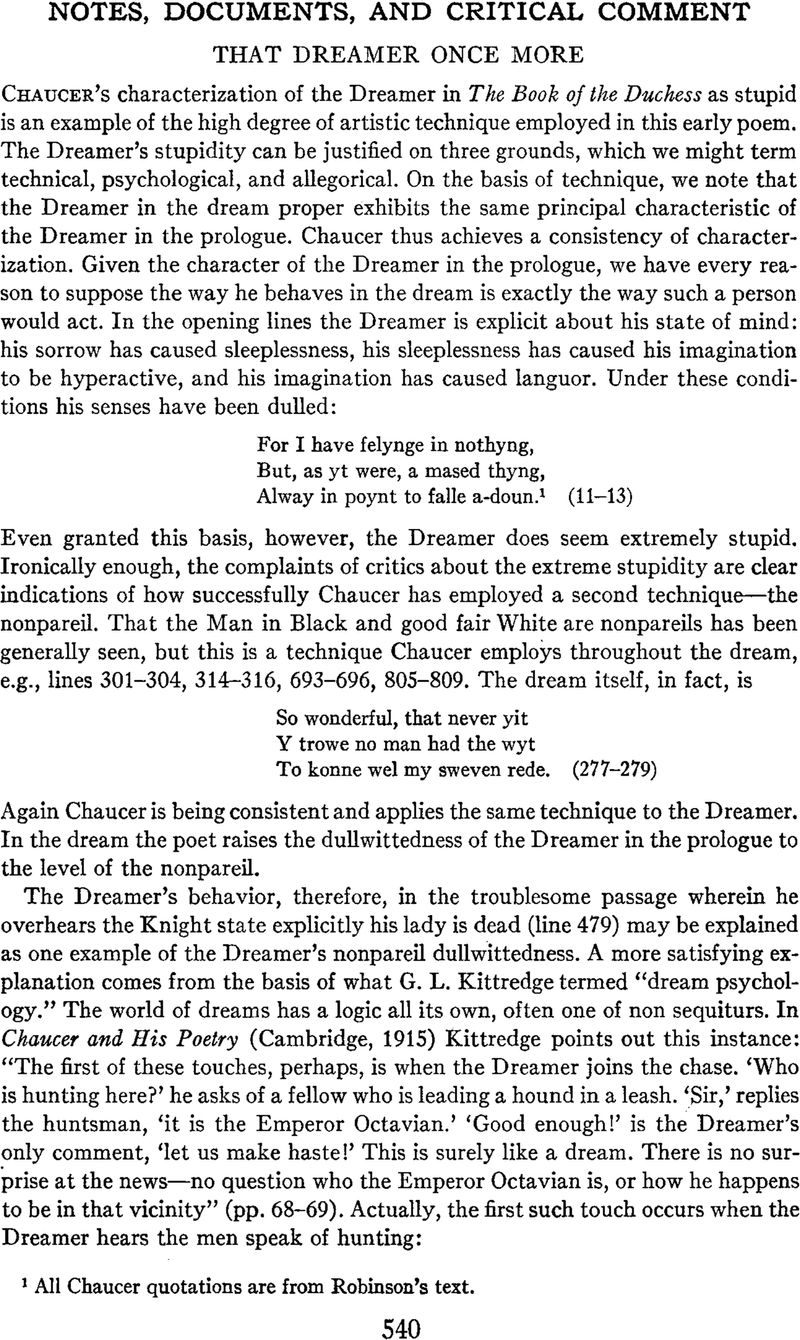Article contents
That Dreamer Once More
Published online by Cambridge University Press: 02 December 2020
Abstract

Information
- Type
- Notes, Documents, and Critical Comment
- Information
- Copyright
- Copyright © Modern Language Association of America, 1956
References
1 All Chaucer quotations are from Robinson's text.
2 An almost identical interpretation was offered by Donald C. Baker, “The Dreamer Again in The Book of the Duchess,” PMLA, LXX (March 1955), 281: “Chaucer is implying clearly that it is beyond the power even of a poet to do justice to the departed Duchess.”
3 This motif is repeated in the dream itself in the image of the hunt. Here the Dreamer engages unsuccessfully in heart-hunting, with the pun on hart that Helge Kökeritz pointed out in “Rhetorical Word-Play in Chaucer,” PMLA, LXIX (Sept. 1954), 951. Images of the hunt are used frequently to describe courtly love, as in RR 1449–54, Troilus ii.1534–35.
4 Chaucer seems to imply in the poem itself his purpose of consolation through parallelism. In the dream sent by Juno and Morpheus to Alcyone, Ceyx offers his wife consolation. Chaucer parallels this situation by having the dream vision follow the Dreamer's prayer to Juno and Morpheus. This much parallelism could imply a like parallelism of result.
- 1
- Cited by

